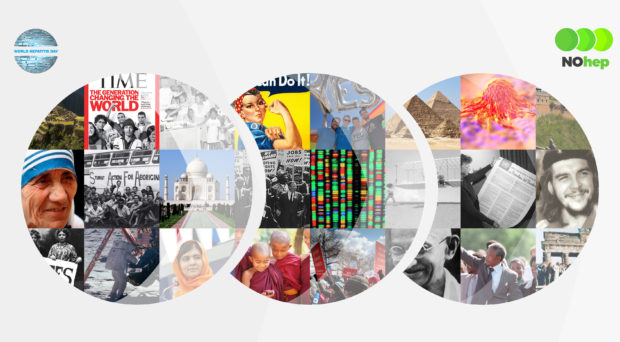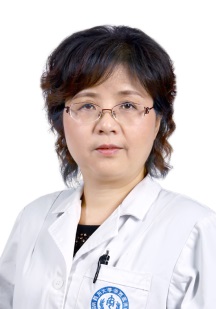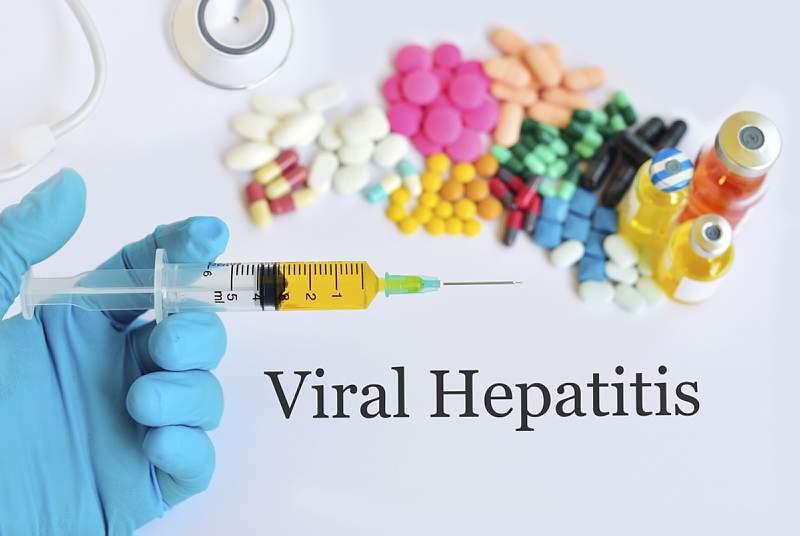
28th July marks World Hepatitis Day, a day for raising awareness about hepatitis and influence real change in disease prevention, diagnosis, treatment and ultimate elimination. Three leading scientists reveal their experience of viral hepatitis research and therapy in their respective countries, and share their perspectives on eliminating viral hepatitis.
How you are involved in hepatitis research?
 Dr Steve Polyak is an Associate Editor for Virology Journal and Research Professor at the University of Washington, USA: I have been studying hepatitis C virus-host interactions that produce inflammation for the past 20 years (1,2). I have also been actively involved in deciphering how natural products engage human cells to prevent HCV (hepatitis C virus) infection and inflammatory sequelae (3,4).
Dr Steve Polyak is an Associate Editor for Virology Journal and Research Professor at the University of Washington, USA: I have been studying hepatitis C virus-host interactions that produce inflammation for the past 20 years (1,2). I have also been actively involved in deciphering how natural products engage human cells to prevent HCV (hepatitis C virus) infection and inflammatory sequelae (3,4).
Dr Hong Tang is an Associate Editor for Virology Journal and Professor/Physician at the West China Hospital, Sichuan University in China: As a physician specializing in viral hepatitis and related complications, I have participated in several multi-center clinical investigations in China, and conducted clinical trials on viral hepatitis to investigate the prevention and treatment strategy of viral hepatitis and the impact on prognosis. As the Principal Investigator of a lab in West China Hospital of Sichuan University, I lead a research team focusing on the mechanisms of regulation in HBV (hepatitis B virus) transcription and replication. The related host factors are studied as well to clarify the pathogenesis, especially carcinogenesis.
in China: As a physician specializing in viral hepatitis and related complications, I have participated in several multi-center clinical investigations in China, and conducted clinical trials on viral hepatitis to investigate the prevention and treatment strategy of viral hepatitis and the impact on prognosis. As the Principal Investigator of a lab in West China Hospital of Sichuan University, I lead a research team focusing on the mechanisms of regulation in HBV (hepatitis B virus) transcription and replication. The related host factors are studied as well to clarify the pathogenesis, especially carcinogenesis.
I also act as a standing committee member of two branches of the Chinese Medical Association: the Chinese Society of Hepatology and the Chinese Society of Infectious Diseases. Both associations focus on clinical as well as basic research on hepatitis. And they provide professional recommendations to help the government formulate policies on management and treatment of viral hepatitis.
 Dr Chau-Ting Yeh is a Reviewer for Virology Journal and a Professor at the Chang Gung Memorial Hospital in Taiwan: I am the Director of Liver Research Center in Chang Gung Memorial Hospital, the largest private medical center in Taiwan, taking care of more than 20% of all hepatitis/hepatoma patients in Taiwan. There are two major research sectors in our Liver Research Center. Firstly, we provide clinical data and statistical analysis for correlation between the expression levels of a target molecule and clinical outcomes. This platform intends to make sure that our researchers are performing clinically relevant translational research. Secondly, we have established a molecular virology laboratory in operation for more than 20 years. In this laboratory, standard quantitative assays for HBV DNA and HCV RNA, together with genotyping, are set up and running. Furthermore, we also provide viral mutation analysis service to monitor the dynamics of viral populations before, during, and after antiviral therapies.
Dr Chau-Ting Yeh is a Reviewer for Virology Journal and a Professor at the Chang Gung Memorial Hospital in Taiwan: I am the Director of Liver Research Center in Chang Gung Memorial Hospital, the largest private medical center in Taiwan, taking care of more than 20% of all hepatitis/hepatoma patients in Taiwan. There are two major research sectors in our Liver Research Center. Firstly, we provide clinical data and statistical analysis for correlation between the expression levels of a target molecule and clinical outcomes. This platform intends to make sure that our researchers are performing clinically relevant translational research. Secondly, we have established a molecular virology laboratory in operation for more than 20 years. In this laboratory, standard quantitative assays for HBV DNA and HCV RNA, together with genotyping, are set up and running. Furthermore, we also provide viral mutation analysis service to monitor the dynamics of viral populations before, during, and after antiviral therapies.
Our Center is one of the major centers for hepatitis clinical trials in Asia, ever since the first anti-HBV oral drug, lamivudine, was developed. We have characterized the clinical roles of various anti-HBV drug resistant mutants. Recently, we also discovered a new class of antiviral drug-associated mutants, the HBV surface truncation mutants, in patients receiving long-term antiviral therapy. It is particularly intriguing and noteworthy that some of these mutants appear to have increased oncogenic potential.
In the past 20 years, what has been the most important achievement in the treatment of viral hepatitis in your country or region?
Steve Polyak: The most important achievements have been the development of the HCV replicon system and the infectious HCV culture system. These technical achievements paved the way for the development of all oral, interferon free anti-HCV therapy, which is now the standard of care.
 Hong Tang: Universal HBV vaccination is the key achievement in HBV infection control. China began implementing this strategy for newborn babies since 1992 and for children and high-risk population in more recent years. Those programs reduced the HBsAg prevalence from 9.09% in 2002 to 7.18% in 2006. From the national seroprevalence survey in 2014, the HBsAg prevalence declined to 4.38% (person from 15-29 years old), 0.94% (children from 5 to 14 years old) and 0.32% (children from 1 to 4 years old). As to treatment, the most important achievement has been the formulation of our own clinical practice guidelines on viral hepatitis. And they have been updated every a few years. They help physicians to standardize the diagnosis and treatment of viral hepatitis by emphasizing the importance of antiviral therapy, optimizing regimens and raising awareness of the importance and benefit of long-term antiviral treatment.
Hong Tang: Universal HBV vaccination is the key achievement in HBV infection control. China began implementing this strategy for newborn babies since 1992 and for children and high-risk population in more recent years. Those programs reduced the HBsAg prevalence from 9.09% in 2002 to 7.18% in 2006. From the national seroprevalence survey in 2014, the HBsAg prevalence declined to 4.38% (person from 15-29 years old), 0.94% (children from 5 to 14 years old) and 0.32% (children from 1 to 4 years old). As to treatment, the most important achievement has been the formulation of our own clinical practice guidelines on viral hepatitis. And they have been updated every a few years. They help physicians to standardize the diagnosis and treatment of viral hepatitis by emphasizing the importance of antiviral therapy, optimizing regimens and raising awareness of the importance and benefit of long-term antiviral treatment.
Another important achievement in China has been that the government conducted large scale clinical studies on viral hepatitis and put in considerable financial resource. We started the National Major Research Project on infectious diseases during the “11th Five Years’ Program” in 2002, and several clinical trials have been conducted focusing on the optimization of antiviral treatment for chronic hepatitis B and C. Several papers have been published already. Also, a long term electronic follow-up system, named CR-HepB, has been established to acquire real word data from patients with chronic hepatitis B on their routine management, helping to optimize therapeutic strategy and reduce mortality.
Chau-Ting Yeh: There are two major achievements in terms of the control of viral hepatitis. Firstly, the successful implementation of a nationwide vaccination program has reduced the HBV carrier rate from >15% to <1%, together with a significant reduction of the incidence of hepatocellular carcinoma in children. A recent advance to further intervene mother-to-infant transmission is to provide pregnancy-allowed antivirals to mothers with a high HBV viral load, so that the viral load can be reduced to an undetectable level during delivery. It is anticipated that the vaccine failure rate can be further reduced.
Secondly, a strategic coverage of anti-HBV treatment by national health insurance policy in Taiwan has significantly reduced the liver failure-related mortality as well as the incidence of HBV-related hepatocellular carcinoma. At this time, however, except for cirrhotic patients, the coverage is not life-long because of a limited health insurance budget.
What do you think will be the biggest challenge to eliminating viral hepatitis by 2030? And how to cope with this challenge?
Steve Polyak: Eradicating HCV infection will require a vaccine. Eradication of HBV will require strategies that target HBV cccDNA. Making antiviral therapy affordable and accessible to all. These are three of the most pressing challenges towards elimination of viral hepatitis.
Hong Tang: The best way to eliminate hepatitis B lies in sufficient prevention for uninfected people. Though China has started routine vaccination for hepatitis B virus in infants since 1992 and made it free since 2002. There are still some rural regions insufficiently covered. And the other important agents for prevention of vertical transmission, HBIG, are still paid by parents. As to viral hepatitis without efficient vaccine, for example, hepatitis C, the biggest challenge lies in how to screen and find infected patients and standardizing the treatment. China suffers a high disease burden of viral hepatitis, so it is not easy for some patients to access or afford the standard treatment for viral hepatitis due to poor local medical conditions and insufficient reimbursement from social insurance.
To cope with them, we physicians should provide effective advice to government professionally for more supportive policies. And all the health workers in this field should cooperate to strengthen the publicity of vaccination, educate the primary care physicians and improve the financial input. We are convinced that viral hepatitis would be eliminated in future if we employ such measures.

Chau-Ting Yeh: For HCV, new oral direct acting antivirals (DAAs) are now being approved by the Taiwan Food and Drug Administration. However, there remains a major obstacle for these drugs to be used for the general population, that is, the notoriously high cost of these drugs. To cope with this problem, either the prices have to be significantly reduced or, a strategic insurance policy has to be devised to allow the great majority of HCV patients to be treated. For example, a peginterferon/ribavirin/protease inhibitor-based therapy with an affordable price can be used as the first-line treatment, while the DAAs can be provided to the relapsers/non-responders.
Another challenge for anti-HCV treatment is the awareness of HCV infection in our population. To cope with this challenge, information sharing through all kinds of media including blogs like we are having should help.
There are two major obstacles for anti-HBV treatment: the persistence, or very slow reduction, of HBV covalently closed circular (ccc) DNA in the hepatocytes, and failure of the immune system in the infected liver to clear the virus.
There are stepwise strategies to cope with these problems. For example, we can seek for “functional cure” instead of true elimination as a first step for the next generation anti-HBV treatment. For “functional cure”, one intends to achieve an undetectable level of HBV-DNA and clearance of HBsAg, with or without development of positive anti-HBs antibody. Under such circumstance, the cccDNA even if remaining, are “non-functional”. New immune modulators or suppressors for viral protein expression, in combination with current polymerase inhibitors, may be able to achieve this goal.
The next step will be to eliminate cccDNA. This should involve novel DNA editing approaches such as the CRISPR-Cas9 technique.
Taken together, we are now on a steady path to eliminating HBV and HCV. Obstacles are foreseeable along the path. But with all researchers and hepatologists together, we can reach the goal.
Karen Cheng
Latest posts by Karen Cheng (see all)
- Hepatitis research and therapy around the globe – Q+A with editors and reviewers - 28th July 2016
- A new era for Inflammation and Regeneration: an Editor Q+A - 25th April 2016
- Little Fish, Big Role - 19th November 2015
Comments